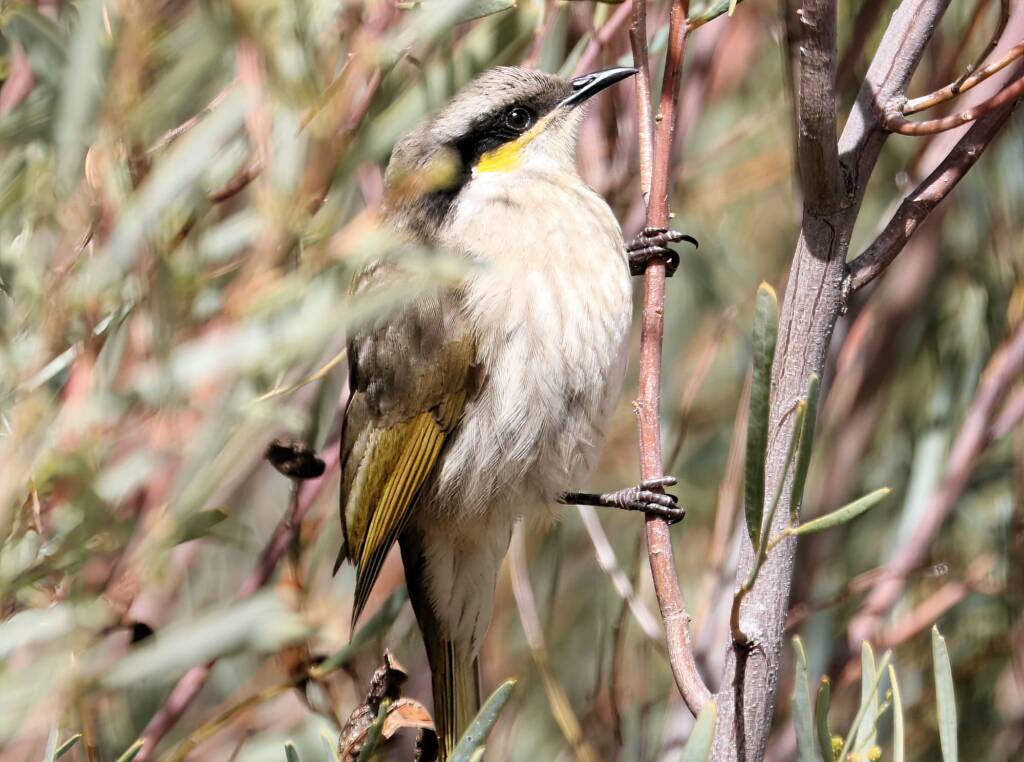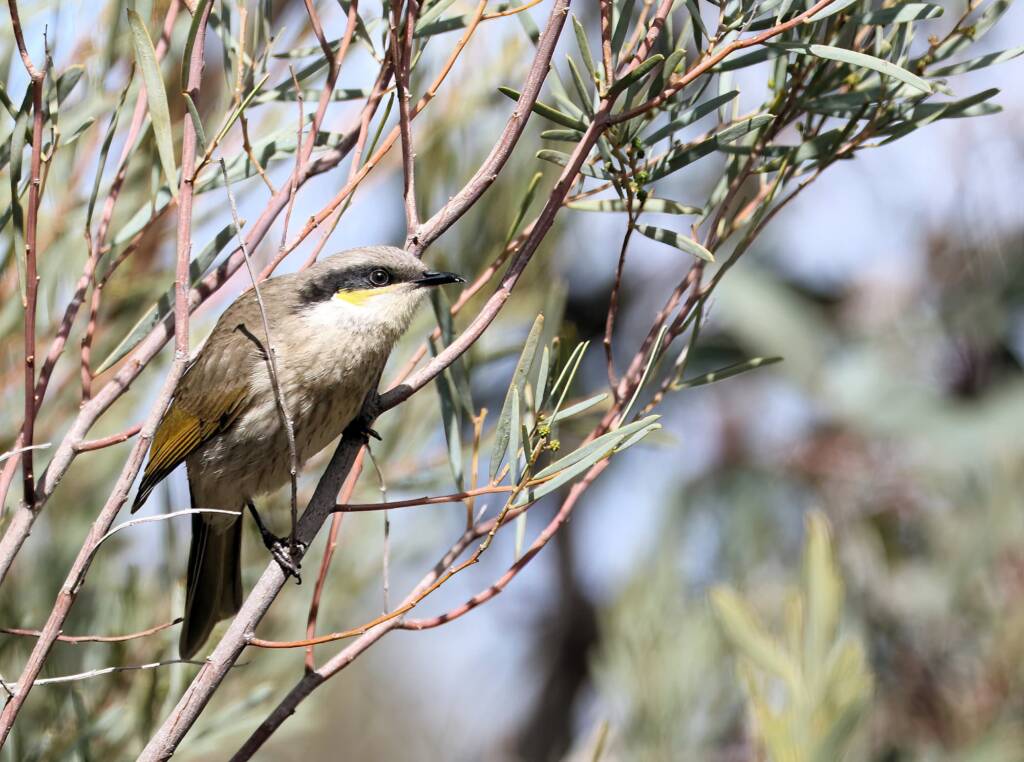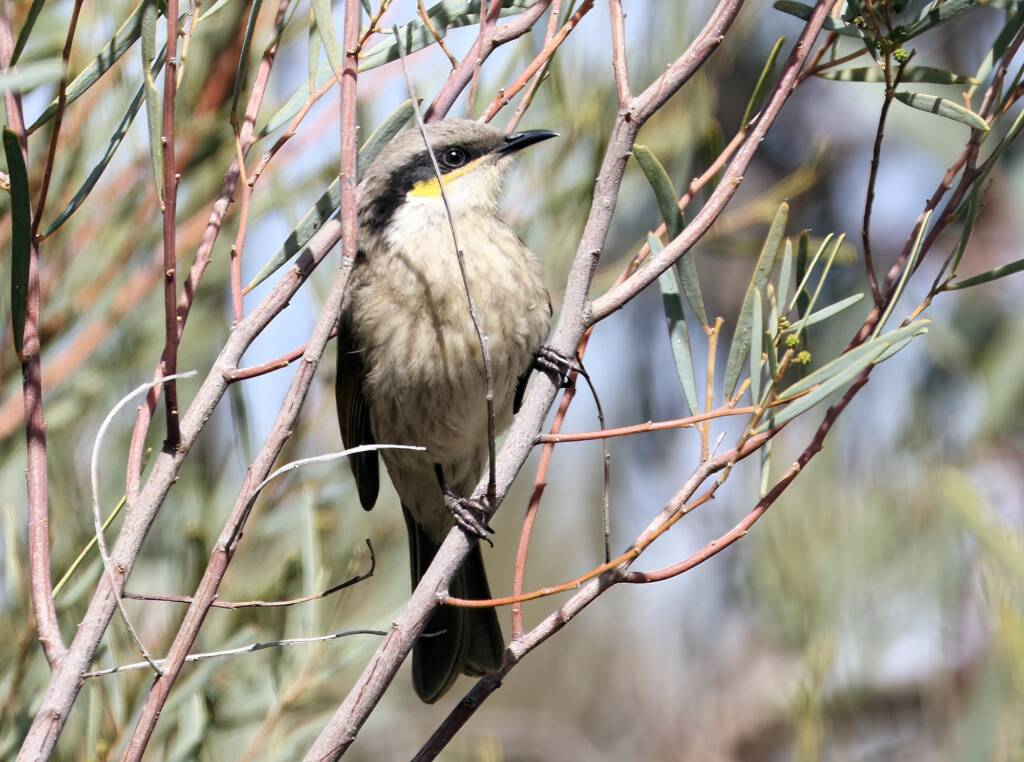Belonging to the family Meliphagidae (that includes honeyeaters and chats) the Singing Honeyeater (Gavicalis virescens) is a small bird found across Australia. Originally described as Meliphaga virescens, it has been moved to the genus Gavicalis. The specific epithet is the Latin virescens meaning ‘greenish’.

They have a grey-brown appears, with tail and wings that are olive-green and yellow. A broad, black stripe runs from the behind the beak to the back, with a yellow streak immediately below the black stripe under the eye. The Singing Honeyeater are between 17–22 cm in length.
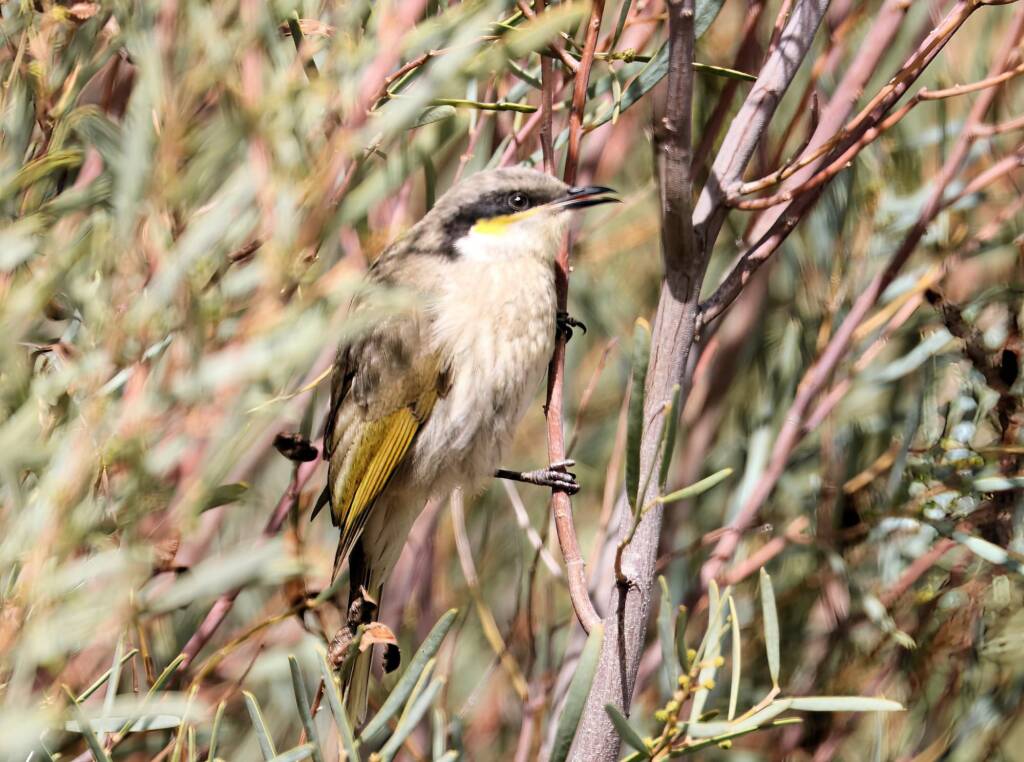
Their song varies according to where they live and ranges from scratchy to melodious.
The Singing Honeyeater is found in a diverse range of habitats, from coastal areas, shrubland, woodland, and the arid centre of Australia.
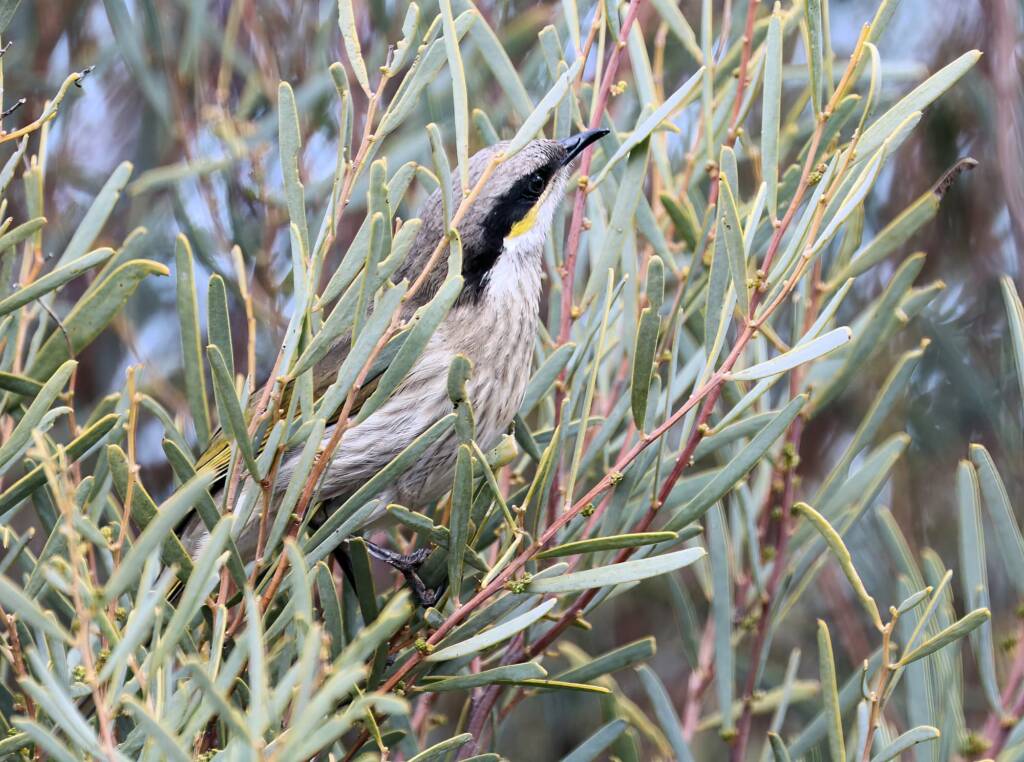

More information in Alice Springs Birds | Singing Honeyeater in Alice Springs.
Check out the blog… It was all over in three frames.
- Scientific classification
- Kingdom: Animalia
- Phylum: Chordata
- Subphylum: Vertebrata
- Informal: Gnathostomata
- Class: Aves
- Order: Passeriformes
- Suborder: Passeri
- Informal: Corvida
- Family: Meliphagidae
- Genus: Gavicalis
- Species: Gavicalis virescens
Footnote & References
- Gavicalis virescens (Vieillot, 1817), Atlas of Living Australia, https://bie.ala.org.au/species/https://biodiversity.org.au/afd/taxa/6ccdb357-d666-4097-b0f6-88bb1a392112
- Singing Honeyeater (Gavicalis virescens) Australia, iNaturalistAU, https://inaturalist.ala.org.au/taxa/370319-Gavicalis-virescens
- Singing Honeyeater (Gavicalis virescens), eBird, https://ebird.org/species/sinhon1
HoneyeatersBlue-faced Honeyeater Brown Honeyeater Brown-headed Honeyeater Crescent Honeyeater Eastern Spinebill Grey-fronted Honeyeater Grey-headed Honeyeater New Holland Honeyeater Noisy Miner Pied Honeyeater Red Wattlebird Scarlet Honeyeater Singing Honeyeater Spiny-cheeked Honeyeater White-plumed Honeyeater Yellow-throated Miner Yellow-tinted Honeyeater Yellow-tufted Honeyeater
BirdsApostlebird Australasian Darter Australasian Figbird Australasian Gannet Australasian Grebe Australasian Pipit Australasian Robins Australasian Shoveler (Spatula rhynchotis) Australasian Wrens Australian Babblers Australian Bustard Australian Chats Australian Magpie Australian Pelican Australian Pratincole (Stiltia isabella) Australian White Ibis Bassian Thrush Black-faced Cormorant Black-faced Woodswallow Black Swan Bowerbirds Brolga Brown Songlark Channel-billed Cuckoo Cinnamon Quail-thrush Cormorants Cuckooshrikes and Allies Dotterels Lapwings Plovers Doves & Pigeons Emu Fairy Martin Finches Grey Fantail Grey Teal Honeyeaters Kingfishers Little Friarbird Little Grassbird Magpie-lark Masked Woodswallow Noisy Pitta Olive Whistler Paradise Riflebird Pardalotes Parrots Pheasant Coucal Pied Butcherbird Rainbow Bee-eater Raptors Rufous Fantail Redthroat Rufous Bristlebird Silver-crowned Friarbird Torresian Crow Waders Welcome Swallow (Hirundo neoxena) Whiskered Tern (Chlidonias hybrida) White-browed Woodswallow White Capped Noddy White-faced Heron White-necked Heron Willie Wagtail Yellow-throated Scrubwren

